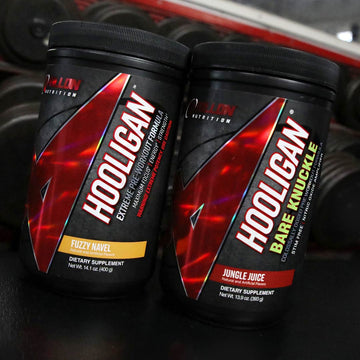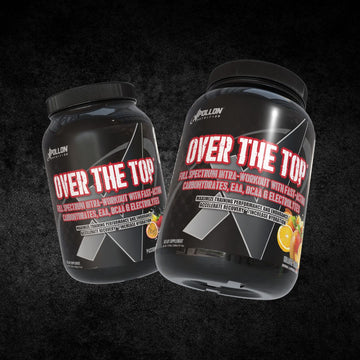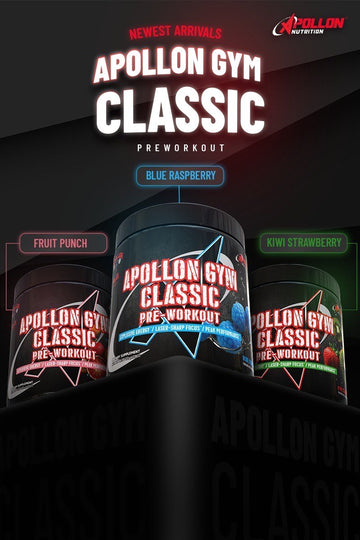There has been some debate over the years as to if citrulline is better than citrulline malate or vice versa. The answer isn’t exactly black and white. It comes down to what your goals are and what you’re looking for in a supplement. Both citrulline and citrulline malate are great ingredients to supplement with, but you should know the difference between them in order to make the best decision for you personally.
Far too many people voice their opinion on which is better and that may not be the best fit for you and what you are trying to accomplish through training and your time in the gym. Therefore, in this article, I want to break down what exactly citrulline and citrulline malate are and what they do for you.
Why Would You Want to Use Citrulline or Citrulline Malate?
If you lift weights, you know the pump you can achieve when working out. That pump is attained when blood rushes into the muscle and engorges it. If you were able to enhance the pump, you could more easily shuttle nutrients into the working muscles and look more swole and vascular – which wouldn’t that be a good thing? Absolutely!
There have been supplements used in the past that over time were found to not really help increase the nitric oxide and the pump (such as arginine which some have found they suffered from digestive issues upon using the ingredient), and therefore, brands have been on a hunt to find the next magic ingredient to include in their formulas to help produce some dramatic vasodilating effects.
What exactly is this “pump” we seem to chase every time we step into the weight room? The pump is where nitric oxide is produced in the body which helps to dilate the blood vessels and ultimately increase blood flow to the working muscles. This brings oxygenated blood into the muscle while also help eliminate byproducts (waste) from the muscle so they can continue to function and perform optimally.
Now, it’s time to get a little nerdy and get into exactly what citrulline is and does as well as citrulline malate.
What is Citrulline?
When you look at citrulline, it’s essentially a non-essential amino acid. What this means is that the body can produce it by itself. The bad news is, going the natural route without the use of supplementation isn’t going to produce a drastic or significant change when it comes to improving nitric oxide levels and muscle growth.
The role of citrulline is to help be converted to arginine in the kidneys which can then be converted into the almighty nitric oxide we demand during our workouts to cause a pump and help make the muscles look full. Citrulline can help not only increase nitric oxide levels but it can also reduce the onset of fatigue during exercise, improve workout performance, and remove waste from the muscle that is produced during intense bouts of exercise (such as lactic acid and ammonia).
Can you get enough citrulline from your diet to where you wouldn't need a supplement? You could, but that's going to be quite a bit of food you would need to eat consistently and regularly – which isn't exactly your best option or feasible. Some common foods that contain citrulline, however, are watermelon, meat, legumes, and nuts. The downside is that these foods aren’t consistent with how much citrulline you can get from each source. For that reason, it’s recommended to simply use a citrulline supplement if you feel it’s beneficial towards helping you move closer to your goals.
What is Citrulline Malate?
Now, to complicate things, let's toss in citrulline malate. Unfortunately, many people assume citrulline and citrulline malate are the same thing – they aren't. Citrulline malate is citrulline combined with malic acid (malate).
As mentioned above with citrulline being available in the food we consume, the malic acid portion of citrulline malate is also found in some of the food we eat such as various fruits and vegetables like apples and grapes for example.
Citrulline and citrulline malate share most of their benefits when it comes to promoting vasodilation and increasing nitric oxide levels in the body. One area where citrulline malate differs is due to the malic acid. The "malate" portion of citrulline malate helps the body increase its natural energy production through the Krebs cycle which can also help further boost your performance in the gym.
With all of that said, being that citrulline malate is a blend of citrulline and malic acid, there can be different ratios produced that you should be aware of. The ratio you should pay the most attention to and look for is a 2:1 ratio of citrulline to malic acid. If the ratios are flipped or if they are equal (a 1:1 ratio), the blend will not be as powerful and the overall quality can be lower.
Who’s the Real Winner?
There is no loser in the case of citrulline vs citrulline malate. Both are great supplements with citrulline malate being considered a citrulline “plus” product that does have a few additional benefits over straight citrulline. All in all, if you want to increase nitric oxide production, enhance your pump, boost energy, and improve performance, grab yourself a pre-workout that includes citrulline or citrulline malate.
If you’re looking for products that contain citrulline or citrulline malate to take your training to the next level, look no further than Apollon Nutrition. Apollon Nutrition is known for producing some of the highest quality products on the market today and the two pre-workouts mentioned below are no exception.
Based on your needs, Apollon Nutrition has launched two different pre-workouts depending on if you want stimulants or not. Apollon Nutrition Hooligan is a stim-based pre-workout that contains citrulline and can help maximize focus, energy, strength, and of course a killer pump. They also released a non-stim version called Apollon Nutrition Hooligan Bare Knuckle which contains citrulline DL-malate, eliminates the stimulants while still providing an increase in energy levels, and amplifies nitric oxide production and the pump you can achieve in the gym. Either way, you can’t go wrong!







